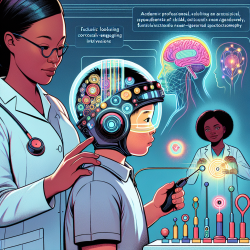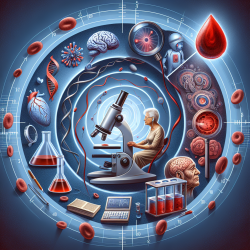Utilizing fNIRS to Improve Tool Use Interventions for Children with ASD
As practitioners dedicated to creating great outcomes for children, understanding the neural mechanisms behind motor skills can significantly enhance our intervention strategies. The study titled fNIRS-Based Differences in Cortical Activation during Tool Use, Pantomimed Actions, and Meaningless Actions between Children with and without Autism Spectrum Disorder (ASD) provides critical insights into the cortical activation patterns of children with ASD during tool use.
Key Findings from the Study
The research utilized functional near-infrared spectroscopy (fNIRS) to compare cortical activation between children with and without ASD during actual tool use, pantomimed actions, and meaningless actions. The main findings include:
- Children with ASD exhibited more praxis errors compared to typically developing (TD) children.
- TD children showed consistent left-lateralized cortical activation, while children with ASD demonstrated more bilateral activation.
- Children with ASD had hyperactivation in the right inferior parietal lobe (IPL) and hypoactivation in the middle/inferior frontal and middle/superior temporal regions during all gestural conditions.
- ASD-related neural activation patterns were correlated with standardized praxis measures and ASD severity.
Implications for Practitioners
These findings offer several practical implications for clinicians working with children with ASD:
- Focus on Visuospatial and Proprioceptive Processing: Given the hyperactivation of the right IPL in children with ASD, interventions should target visuospatial and proprioceptive processing. Techniques such as visuomotor skills training can be beneficial.
- Gradual Increase in Task Complexity: Start with actual tool use before moving to pantomimed actions. This step-by-step approach can help children build confidence and competence.
- Use of fNIRS as a Biomarker: fNIRS can serve as an objective measure to monitor the effectiveness of interventions. Regular assessments can help tailor interventions to individual needs.
- Incorporate Charade-Like Games: Engaging children in games that involve pantomimed gestures can enhance their cognitive and motor skills in a fun and interactive way.
- Manage Anxiety and Behavioral Symptoms: Techniques such as deep pressure may help manage anxiety and other behavioral symptoms, improving overall intervention outcomes.
Encouraging Further Research
While this study provides valuable insights, further research is needed to explore the long-term impact of these findings on intervention strategies. Practitioners are encouraged to collaborate with researchers to develop and test new intervention methods based on these neural mechanisms.
To read the original research paper, please follow this link: fNIRS-Based Differences in Cortical Activation during Tool Use, Pantomimed Actions, and Meaningless Actions between Children with and without Autism Spectrum Disorder (ASD).










